Concerns Raised About Playground Material Chosen for New Elementary School
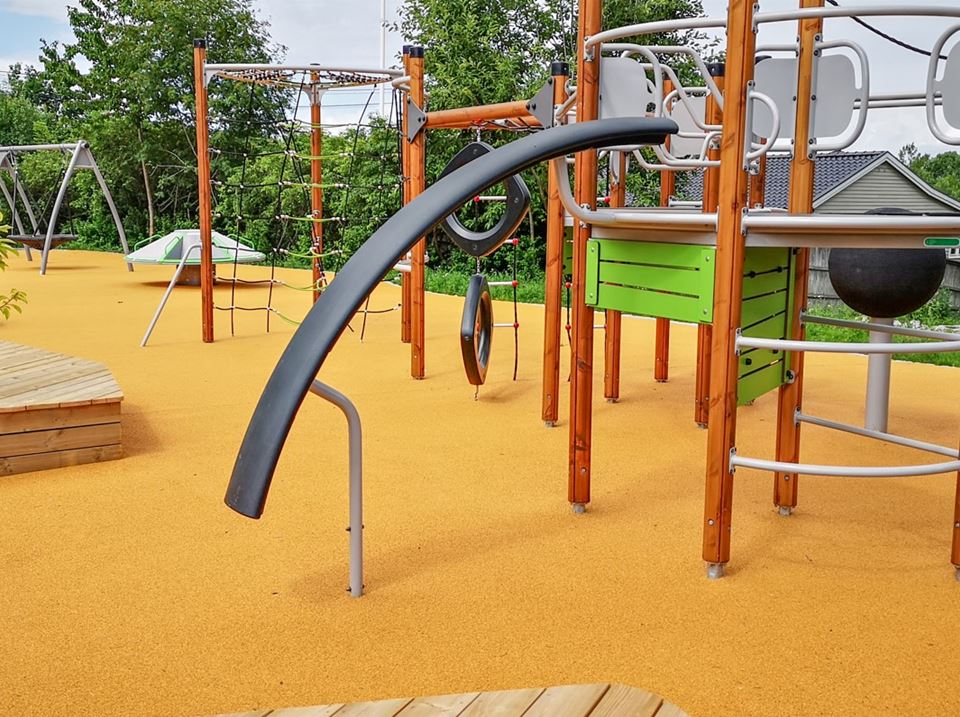
Corkeen playground installation in Norway. Photo: Corkeen.com
Report on the Meeting of the Elementary School Building Committee, August 15, 2024
This meeting was held over Zoom and was recorded.
The Elementary School Building Committee confronted the possibility of having to endorse a different playground surface for the new elementary school after receiving reports of installation problems for the chosen material, Corkeen, at a school in Easton, Massachusetts.
The ESBC chose in 2024 to install Corkeen, a new bonded material made from cork, for the surface of the playground at the new school. Corkeen, which has been widely used in Europe but is relatively new in the United States, has the advantage of being made from natural, nontoxic material and being ADA accessible, like other poured in place (PIP) “unitary” products”. It was approved by the Amherst Conservation Commission, which was concerned about the use of toxic material in the Fort River watershed area. They explicitly advised against the use of crumb rubber based products. The Amherst Board of Health also advised against using a crumb rubber product. Then Board of Health member Timothy Randhir (UMass Professor of Environmental Conservation), summarized the research on crumb rubber products. He noted that crumb rubber, which is manufactured from recycled tires, contains multiple toxic substances including heavy metals, volatile and semi-volatile organic compounds, and polyaromatic hydrocarbons that are released into the environment from products that contain these products.
Because of the lack of experience with the Corkeen product in the States, DiNisco Design, the design team for the project, was not comfortable with managing the procurement and installation of the material. That responsibility thus fell to the town and to Capital Projects Manager Bob Peirent. Peirent and Margaret Wood, from the Owner’s Project Manager (OPM) Anser, heard of problems with the recent installation of Corkeen on a playground at Richard Olmstead Elementary School in Easton, Massachusetts, the first use of the material in Massachusetts.
In visiting the Easton site, Peirent learned that there were several problems the school encountered. First, the work was delayed because the contractor didn’t show up as scheduled several times. Then, within a year, some of the playground surface started to degrade, especially areas around the swings and the spinning equipment. Those areas are now being repaired. Some are receiving a new surface coat, but some areas need the replacement of the base as well.
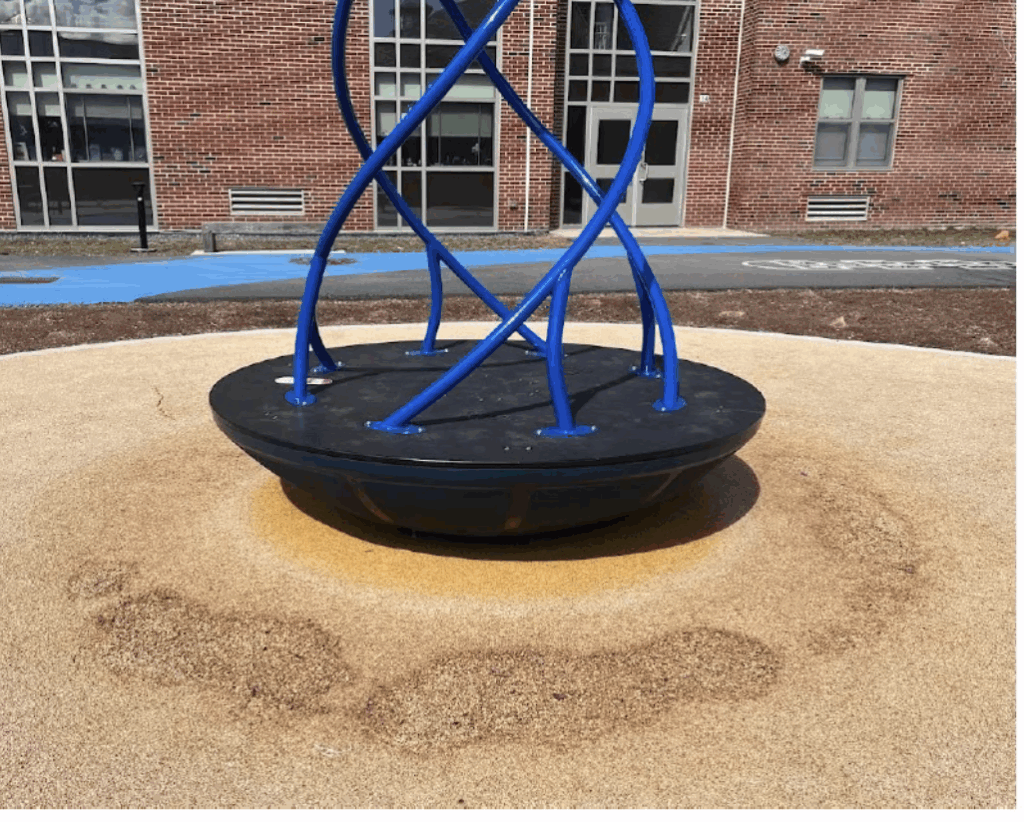
Peirent noted that the installation process for Corkeen is complex. There is a stone base that has binder material applied, so the Corkeen will adhere to it. The base layer is composed of larger particles than the surface layer, so that it is more durable. The surface is somewhat stiffer than that of PIP rubber, he said, and noted that the material must be installed in air temperatures between 5 and 25 degrees centigrade (41 to 74 degrees Fahrenheit), so the work in Easton is being done at night this summer.
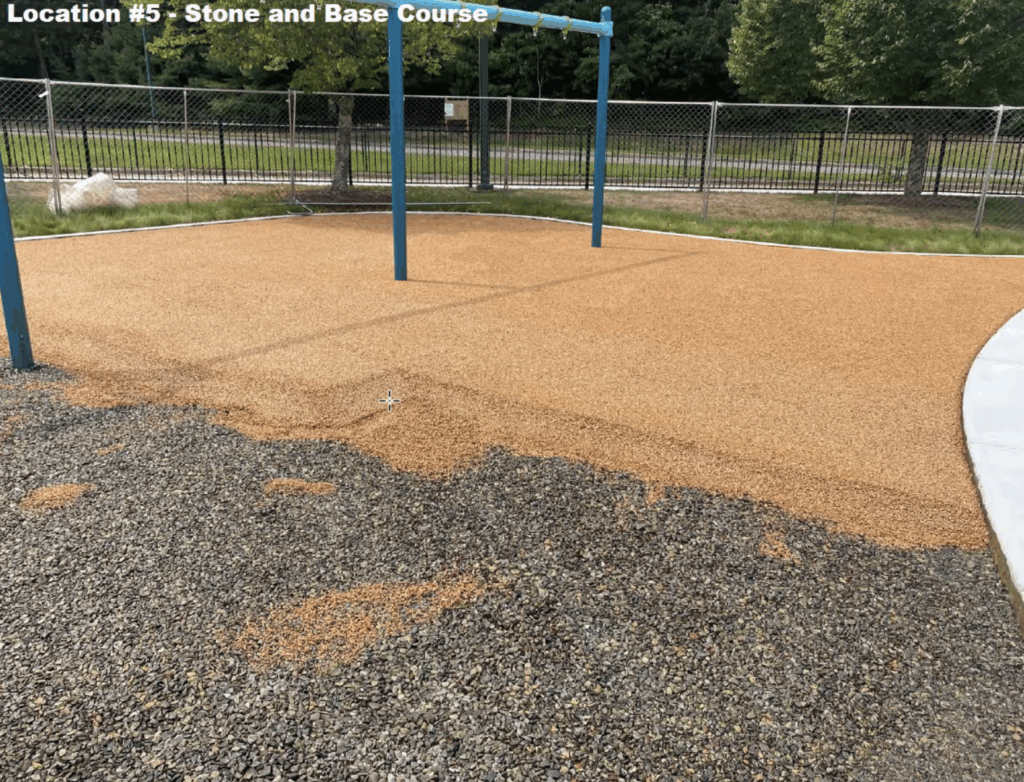
In addition to the problems encountered in Easton, Peirent has had trouble communicating with the company. The local supplier changed, as did the sales manager, and installer. The president of the national subsidiary of the Amorim Group (the company that produces Corkeen) which is located in Louisiana, admitted that there had been some problems with the installation and that it was retooling its installation method. Corkeen is manufactured in Portugal and has been used successfully in Europe since 2016, including several sites in Norway. However, Peirent did not feel confident in either the company or the material and recommended in a detailed memo that the ESBC select a different playground material.
Because of the sensitive nature of the site, being adjacent to the Fort River, the Conservation Commission recommended either engineered wood fiber, cork-based PIP, sand, or pea gravel. ESBC member Angelica Bernal and Wildwood Principal Allison Estes both worried about the accessibility of engineered wood fiber. Estes noted that students at Wildwood in wheelchairs cannot access the playground and that the wood chips currently there are difficult to maintain. She said that, although protecting the environment was important, her priority was that “all children can fully play with each other.”
Estes and Peirent also raised concerns that engineered wood fiber was sufficiently accessible and also that it quickly degraded. Bernal noted that in addition to the concerns about rubber PIP containing toxic materials, the playgrounds at Groff Park and Kendrick Park that use this material are “incredibly hot” and not healthy to play on. She suggested shade canopies if the material was used at Fort River. Peirent stated that rubber itself doesn’t contain PFAS (forever) chemicals, those are introduced in the manufacturing process. Peirent did not address the presence of heavy metals and other carcinogenic materials in rubber PIP.
Designer Tim Cooper offered a hybrid design, with rubber PIP around the play structures and engineered wood fiber in the rest of the playground area, which would reduce the use of the crumb rubber by about 50%, but Estes still objected to the fact that half the playground would be inaccessible to those in wheelchairs. Any use of crumb rubber would need to go before the Conservation Commission again to seek approval/permitting.
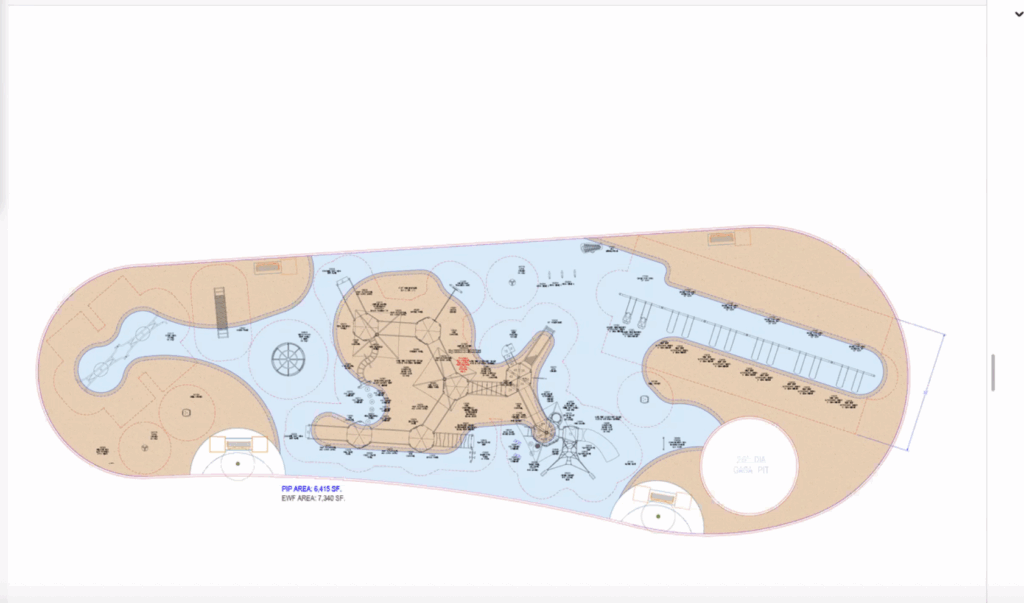
ESBC member Bruce Coldham said it was distressing that the product and manufacturer did not seem reliable enough for the committee to commit to using them because Corkeen seemed like an improvement over other options. Amherst School Committee representative to the ESBC Deb Leonard urged that the committee get more information and more community input before it makes a decision on the surface. She wanted to know more about engineered wood fiber and wanted information from the European manufacturer of Corkeen and how its installations had held up over time. She also suggested that the project get added to the Conservation Commission docket, in case a change in material was needed.
In public comment Maria Kopicki stressed the health dangers of rubber PIP surfaces. She stressed the carcinogens that can be inhaled, ingested, or contacted on the skin of children playing on the playground. She also pointed out that engineered wood fiber is also available in a “bonded” form making it ADA accessible. She urged the committee to commit to an alternative to rubber for a net-zero school that should be a model of environmental preservation.
ESBC Chair Cathy Schoen took note of the issues raised in the discussion. She hoped that most of the information requested by the committee can be gathered by the group’s meeting in September. Construction of the playground is slated to begin in April 2026, so a decision on the material needs to be made soon, especially if a material not already okayed by the Conservation Commission needs to be approved.
School Construction on Schedule
In a report on the progress of the construction, the committee heard that the construction was about one-third complete. The masonry is being installed and the last two concrete slabs in the administration area and the cafeteria are ready to be poured. The next chance for the ESBC to tour the site will be on Tuesday, September 30 at 3 p.m.
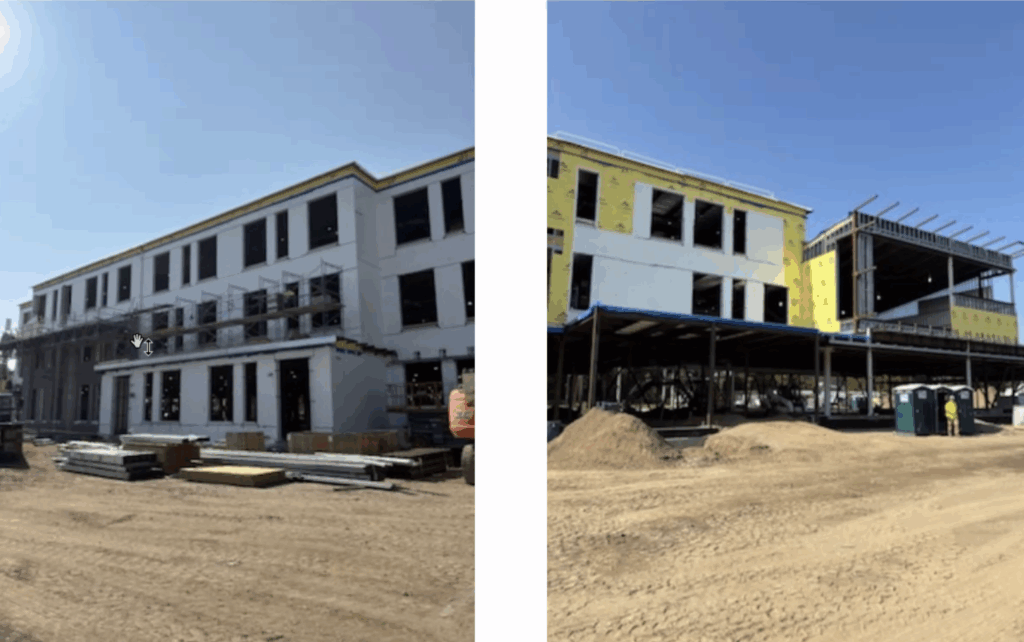

Trying to eliminate the best material (Corkeen) because of problems with the installation/contractor at one other project is ridiculous. Someone on the project should put in some effort and contact the parent company (Amorin) directly and get the contracts and reassurances necessary to ensure a proper installation. Having their product at the school at Fort River would be a win-win as a model project allowing them to expand into this market that is hungry for ways to take positive environmental and climate actions.
Meanwhile, the Board of Health and Conservation Commission did their homework, conducted their meetings, and explicitly told the building committee that it shouldn’t use rubber PIP, and for good reasons (human health risks and negative environmental impacts). Installing a huge area of petroleum based product adjacent to a river at a net zero elementary school makes no sense. It would also be a decision you can’t take back – once there, the toxic chemical start leaching immediately, it gets really hot, and when it degrades (which it will), the exposure increases as all those little bits of recycled car tires are freed from the surface.
The choice of playground material should be between Corkeen and Engineered Wood Fiber (loose fill and/or bonded to form a smooth, ADA accessible surface). There had been agreement by the building committee that Corkeen was the best choice. The only thing standing in the way of Corkeen now is the will on the part of the people in charge to make it happen.
The old playground at Wildwood is so great. I know the trend these days is to avoid that style of playground but the old wooden ones are really the best and playgrounds since then have all been second rate. The one at wildwood in particular was the best version of that style of playground I’ve ever seen. We should recreate it using volunteer workers from around town and it would just be the cost of materials.
Playgrounds these days are really sad.
This is an interesting article. I appreciate the concern of caregivers, parents, community members, and others who are concerned about our children’s exposure to toxic elements. I joined the group fighting against manmade turf, which was to be purchased for the ARHS track and field, known to contain PFAs. What drives me to write today: I can only hold out hope that many others, who question the use of toxic, or otherwise not safe/carcinogenic materials, to be placed around our children while they play happily atop a brand new, playground structure, will concern themselves with the food choices on the same children’s school lunch plates. For years, I have been researching, talking with milk distributors, talking with local farms, and calling the groups on the clean/organic food petition that we have composed. Did you know every carton of milk served to a child can contain up to twenty-one chemicals? This includes any pesticides sprayed all over the grains served to the dairy cows. I could write that list, but I believe comments here have a limit. And then the food dyes. Many are banned in Europe, but allowed in the cereal choices served in the Amherst Schools daily! Please email me at: Mammalou69@outlook.com if you are interested in reading the petition and signing on. And listen to Maria: “In public comment, Maria Kopicki stressed the health dangers of rubber PIP surfaces. She stressed the carcinogens that can be inhaled, ingested, or contacted on the skin of children playing on the playground. She also pointed out that engineered wood fiber is also available in a “bonded” form, making it ADA accessible. She urged the committee to commit to an alternative to rubber for a net-zero school that should be a model of environmental preservation.” Thank you!